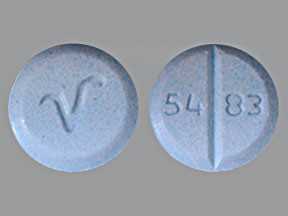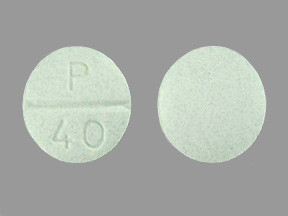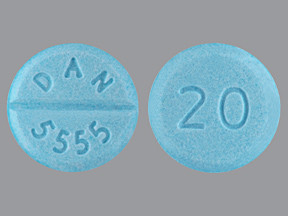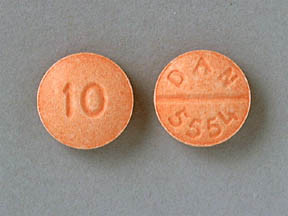PROPRANOLOL - ORAL
PHONETIC PRONUNCIATION: (pro-PRAN-oh-lol)
COMMON BRAND NAME(S): Inderal
GENERIC NAME(S): propranolol HCl
Uses
USES: This medication is a beta blocker used to treat high blood pressure, irregular heartbeats, shaking (tremors), and other conditions. It is used after a heart attack to improve the chance of survival. It is also used to prevent migraine headaches and chest pain (angina). Lowering high blood pressure helps prevent strokes, heart attacks, and kidney problems. Preventing chest pain can help improve your ability to exercise. This drug works by blocking the action of certain natural chemicals in your body (such as epinephrine) that affect the heart and blood vessels. This effect reduces heart rate, blood pressure, and strain on the heart.
How to use PROPRANOLOL - ORAL
HOW TO USE: See also Warning section. Take this medication by mouth, usually 2 to 4 times daily or as directed by your doctor. Take this medication before meals (and at bedtime if taking 4 times daily). Measure the liquid medication with a medication-measuring spoon or device. Do not use a household spoon because you may not get the correct dose. The dosage is based on your medical condition and response to treatment. Use this medication regularly to get the most benefit from it. To help you remember, take it at the same times each day. It is important to continue taking this medication even if you feel well. This medication is used to help prevent chest pain or migraines. It should not be used to treat chest pain or migraines when they occur. Use other medications (e.g., nitroglycerin tablets placed under the tongue for chest pain, sumatriptan for migraines) to relieve sudden attacks as directed by your doctor. Consult your doctor or pharmacist for details. If you also take certain drugs to lower your cholesterol (bile acid-binding resins such as cholestyramine or colestipol), take propranolol at least 1 hour before or at least 4 hours after these medications. For the treatment of high blood pressure, it may take 1 to 2 weeks before you get the full benefit of this drug. Tell your doctor if your condition worsens (e.g., your routine blood pressure readings increase, your chest pain or migraines occur more often).
Side Effects
Precautions
Interactions
Overdose
Images
Reviews
Faq for PROPRANOLOL - ORAL
Propranolol is primarily used to treat high blood pressure, heart rhythm disorders, and prevent migraines. It may also be prescribed for anxiety and certain types of tremors.
Propranolol belongs to a class of medications called beta blockers, which work by blocking certain nerve impulses. This results in a slower heart rate, reduced blood pressure, and improved blood flow.
Common side effects of Propranolol may include tiredness, dizziness, nausea, upset stomach, diarrhea, difficulty sleeping, and cold hands or feet. If these side effects persist or worsen, it is important to consult your healthcare provider.
Yes, Propranolol is sometimes prescribed for anxiety. It helps control physical symptoms such as rapid heartbeat, trembling, and sweating. However, it is important to note that it does not treat the underlying causes of anxiety.
Propranolol should be taken as directed by your doctor. It is usually taken orally, with or without food, once or twice a day. It is important to follow the prescribed dosage and not to stop taking the medication suddenly without consulting your healthcare provider.
It is important to consult your doctor before using Propranolol during pregnancy or while breastfeeding. The potential risks and benefits need to be assessed on an individual basis.
If you miss a dose of Propranolol, take it as soon as you remember. However, if it is close to your next scheduled dose, skip the missed dose and resume your regular dosing schedule. Do not double the dose to make up for a missed one.
Propranolol may be prescribed to children for certain conditions, such as heart rhythm disorders. The dosage and usage should be determined by a pediatric healthcare professional.
Propranolol can interact with certain medications, including other beta blockers, blood thinners, antidepressants, and certain antifungal drugs. It is important to inform your doctor about all the medications you are taking to avoid potential interactions.
Warning
WARNING: Do not stop using this drug without first consulting your doctor. Your condition may become worse when the drug is suddenly stopped, especially if you have chest pain (angina) or heart disease (e.g., coronary artery disease, ischemic heart disease, high blood pressure). If your doctor decides you should no longer use this drug, you must gradually decrease your dose according to your doctor's instructions. When gradually stopping this medication, it is recommended that you temporarily limit physical activity to decrease strain on the heart. Seek immediate medical attention if you develop: worsening chest pain, tightness/pressure in the chest, chest pain spreading to the jaw/neck/arm, unusual sweating, trouble breathing, or fast/irregular heartbeat.
Disclaimer
IMPORTANT: HOW TO USE THIS INFORMATION: This is a summary and does NOT have all possible information about this product. This information does not assure that this product is safe, effective, or appropriate for you. This information is not individual medical advice and does not substitute for the advice of your health care professional. Always ask your health care professional for complete information about this product and your specific health needs.






No Reviews Yet